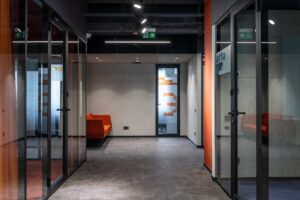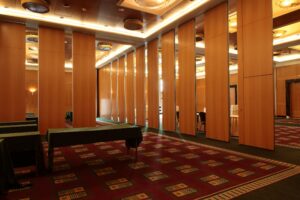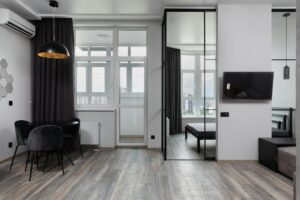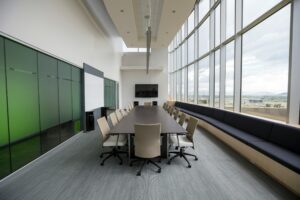The modern workplace is undergoing a significant shift. Gone are the days of static cubicles and dedicated offices. Today’s workforce demands an environment that fosters collaboration, accommodates diverse work styles, and adapts to evolving business needs. Operable walls, also known as movable or partition walls, present a compelling solution for achieving this desired flexibility in office design.
This case study explores the implementation of operable walls in a fictional company, Acme Inc., and analyzes the positive impact on their work environment.
The Challenge: A Rigid Layout Fails to Adapt
Acme Inc., a marketing agency with 100 employees, faced a growing challenge. Their traditional office layout, consisting of fixed walls and closed-off departments, hampered collaboration and hindered communication. Open communication and teamwork are crucial for their creative brainstorming sessions and client presentations. Additionally, the limited space restricted their ability to accommodate team huddles, training sessions, and large client meetings.
The fixed layout created a sense of isolation for some employees, while others were easily distracted by surrounding noise. The lack of adaptability meant that underutilized spaces remained stagnant, while high-demand areas felt cramped.
The Solution: Introducing Operable Walls
Acme Inc. recognized the need for a more dynamic workspace. After careful consideration, they opted to incorporate operable walls throughout their office. These walls, available in various configurations, offered a perfect blend of functionality and aesthetics.
- Accommodating Diverse Needs: Acme opted for a combination of operable wall types. Sliding glass walls provided transparency while offering sound control for focused work. Solid operable walls created private spaces for meetings and confidential discussions. The ability to configure these walls allowed for the creation of open collaborative areas, small meeting rooms, and large presentation spaces as needed.
- Optimizing Space Utilization: With operable walls, Acme could transform their office layout on the fly. Underutilized areas could be sectioned off for focused work or brainstorming sessions. Open floor plans fostered collaboration and fostered a sense of community. When needed, larger spaces could be created for company-wide meetings or client presentations.
- Promoting Employee Well-being: Operable walls provided employees with greater control over their work environment. Feeling overwhelmed by noise? A sectioned-off space offered a temporary quiet haven. Need to collaborate? Opening the walls facilitated brainstorming sessions. This flexibility empowered employees to choose their work environment and optimize their productivity.
Implementation:
The implementation process involved selecting the most suitable operable wall systems for different areas within the office. Factors like soundproofing needs, desired level of transparency, and aesthetics were considered. The installation process was carefully planned to minimize disruption to ongoing work.
Training for Flexibility:
Acme Inc. understood that maximizing the benefits of operable walls required employee buy-in. A training program was conducted to educate employees on the proper use and operation of the walls. This ensured responsible use and maintained the walls’ functionality.
The Results: Adaptability Breeds Success
The implementation of operable walls transformed Acme Inc.’s office space into a dynamic and adaptable environment.
- Enhanced Collaboration: The ability to create open floor plans fostered a more collaborative atmosphere. Teams could easily work together, share ideas, and provide real-time feedback.
- Improved Communication: Open spaces facilitated better communication across departments. Spontaneous discussions and information sharing became more commonplace, fostering a stronger sense of teamwork.
- Increased Efficiency: The ability to create dedicated workspaces and meeting rooms on-demand improved overall workflow and meeting scheduling.
- Employee Satisfaction: The flexibility and control over their work environment boosted employee morale and satisfaction. Employees appreciated the ability to customize their workspace based on their needs.
- Cost Savings: The adaptable layout allowed Acme to optimize their existing space, potentially eliminating the need for additional office rentals as the company expands.
Conclusion: Operable Walls – A Strategic Investment
The case of Acme Inc. demonstrates the transformative potential of operable walls in creating a flexible and adaptable office environment. By fostering collaboration, promoting communication, and empowering employees, operable walls can contribute significantly to a company’s success. While the initial investment in operable walls may seem significant, the long-term benefits in terms of employee well-being, space utilization, and overall productivity make it a strategic investment for any forward-thinking business.
Looking Forward:
As the future of work continues to evolve, the demand for adaptable office spaces is likely to increase. Operable walls are poised to play a key role in creating dynamic work environments that cater to the ever-changing needs of the modern workforce. By embracing this innovative approach, companies can unlock a competitive edge and create a thriving workplace for their employees.




